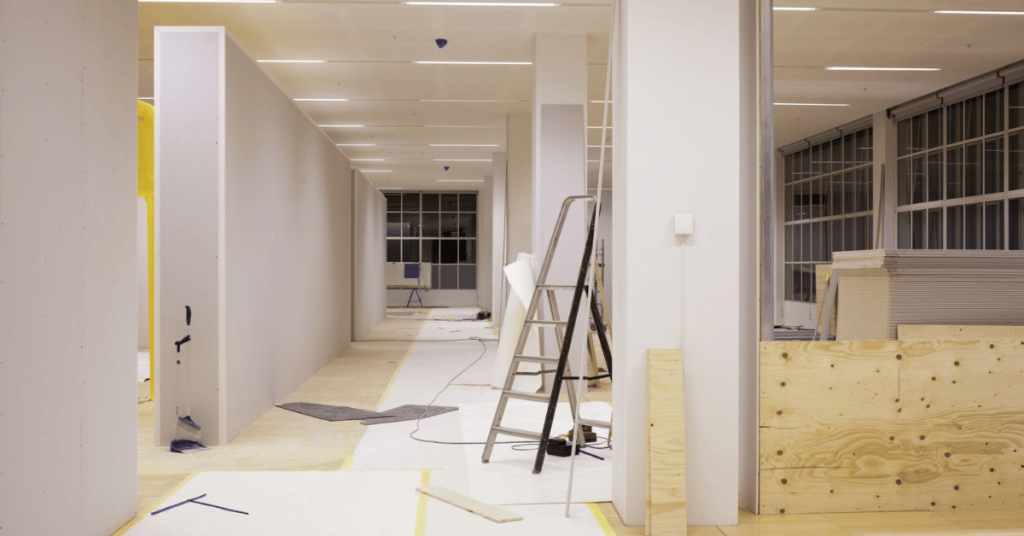Commercial remodeling is a critical investment for businesses in San Antonio looking to modernize their spaces, enhance functionality, and appeal to customers and employees alike. Whether it’s a restaurant, office, retail store, or industrial facility, thoughtful remodeling can align a physical space with a company’s goals and brand identity.
San Antonio, with its diverse business landscape, provides a unique opportunity for businesses to transform their spaces into environments that not only meet operational needs but also create a lasting impression. Here’s a detailed look at how commercial remodeling can help achieve this.
Why Commercial Remodeling Matters
Businesses evolve, and so do the needs of their spaces. A thoughtfully remodeled commercial property offers more than just aesthetic appeal—it can improve efficiency, foster better customer experiences, and even boost employee morale. Here’s why it’s worth considering:
- Adapting to Market Trends
Business trends constantly shift. For example, many offices now prioritize open-concept layouts and collaboration zones, while retail stores focus on enhancing customer experiences with modern lighting and technology integration. - Improving Functionality
A poorly designed space can hinder productivity. For instance, outdated office layouts or inadequate storage in retail areas can slow operations. Remodeling allows you to rethink layouts to better support day-to-day activities. - Enhancing Customer Appeal
First impressions matter. A modern, stylish business space can attract customers, reinforce your brand image, and build trust. - Increasing Property Value
A remodeled commercial property not only meets immediate business needs but also becomes an asset with higher resale or rental value.
Key Elements of a Successful Commercial Remodel
A successful commercial remodeling project blends aesthetics, functionality, and practicality. Here are the essential components to focus on:
1. Space Planning and Layout Design
Space planning is the foundation of any remodeling project. It ensures every square foot is utilized effectively. For example:
- Restaurants: Efficient layouts can maximize seating capacity without making the space feel crowded.
- Offices: Open layouts with designated quiet zones encourage collaboration and focus.
- Retail Stores: Strategic shelving and aisle designs improve traffic flow and product visibility.
Incorporating flexible design elements, such as movable partitions, can allow businesses to adapt spaces as their needs evolve.
2. Lighting Design
Lighting plays a vital role in setting the tone of a commercial space. Proper lighting can highlight focal areas, improve visibility, and create a welcoming ambiance. For example:
- Warm lighting: Ideal for restaurants and cafes to create a cozy atmosphere.
- Bright, white lighting: Common in retail stores to ensure product visibility.
- Natural light integration: Boosts employee productivity and reduces energy costs in office environments.
3. Modern Technology Integration
Technology is no longer optional—it’s essential. Businesses should incorporate features such as:
- Smart lighting and HVAC systems: Save energy and provide better control over the environment.
- Digital signage and touchscreens: Enhance customer experience in retail spaces.
- High-speed internet and connectivity hubs: Essential for modern office spaces.
According to the U.S. Department of Energy, businesses can reduce energy costs by up to 30% by integrating energy-efficient technologies during remodeling.
4. Materials and Finishes
Choosing the right materials and finishes is about balancing aesthetics, durability, and cost. Consider:
- Sustainable materials: Bamboo flooring or recycled metal can appeal to eco-conscious customers.
- Durable finishes: High-traffic areas need materials that can withstand wear and tear, such as porcelain tiles for flooring or quartz for countertops.
5. Compliance with Local Building Codes
San Antonio has specific building codes and zoning regulations that must be followed during remodeling. These regulations cover fire safety, ADA compliance, and energy efficiency standards. Consulting with a local professional familiar with these requirements is crucial to avoid delays and legal complications.
6. Brand Identity
A remodeled space should reflect a business’s brand. For instance:
- A high-end boutique might use luxury materials like marble and gold accents to convey exclusivity.
- A tech startup could incorporate sleek, minimalist designs with pops of color to reflect innovation.
Popular Commercial Remodeling Trends in San Antonio
- Eco-Friendly Designs Sustainability is becoming increasingly important for businesses. Features like solar panels, energy-efficient lighting, and water-saving fixtures are in demand. According to the U.S. Green Building Council, green-certified buildings consume 25% less energy and 11% less water, making them more cost-effective in the long run.
- Biophilic Design Incorporating natural elements, such as greenery, natural light, and organic materials, is a trend that enhances both aesthetics and well-being. Studies have shown that biophilic designs can improve employee productivity by up to 15%.
- Hybrid Workspaces With the rise of remote and hybrid work models, offices are shifting towards flexible spaces. Features like hot desks, breakout areas, and private phone booths are becoming standard.
- Interactive Customer Experiences Retail and hospitality spaces are integrating technology to provide interactive experiences. Examples include virtual fitting rooms, self-checkout kiosks, and app-controlled dining experiences.
Challenges to Anticipate During Remodeling
While commercial remodeling has its benefits, it’s important to anticipate and plan for potential challenges:
- Budget Overruns Remodeling projects can sometimes exceed budgets due to unforeseen issues, such as structural problems or material delays. A detailed plan and contingency fund can help mitigate these risks.
- Minimal Disruption For businesses that need to remain operational during remodeling, minimizing disruption is key. Strategies include working in phases, scheduling work during off-hours, and using temporary partitions.
- Coordination with Multiple Stakeholders Commercial remodeling often involves coordination between contractors, designers, and business owners. Clear communication and regular updates are essential for keeping everyone on the same page.
Steps to Plan Your Commercial Remodeling Project
- Define Your Goals
Clearly outline what you want to achieve with the remodel, whether it’s improving workflow, enhancing customer experience, or increasing energy efficiency. - Set a Realistic Budget
Include costs for materials, labor, permits, and unexpected expenses. Prioritize where to spend to ensure the most impactful changes. - Hire Experienced Professionals
Work with contractors and designers who specialize in commercial remodeling. Look for professionals familiar with San Antonio’s specific needs and codes. - Plan for Future Growth
Design your space with scalability in mind to accommodate future expansion or changes in operations. - Schedule a Timeline
Create a timeline that aligns with your business operations. Be prepared for potential delays but aim to minimize downtime.
Commercial remodeling is a significant investment, but it can pay off in multiple ways—enhancing functionality, boosting customer and employee satisfaction, and increasing property value. With the right planning and professional guidance, businesses in San Antonio can transform their spaces into environments that are as practical as they are stylish, creating a foundation for long-term success.

